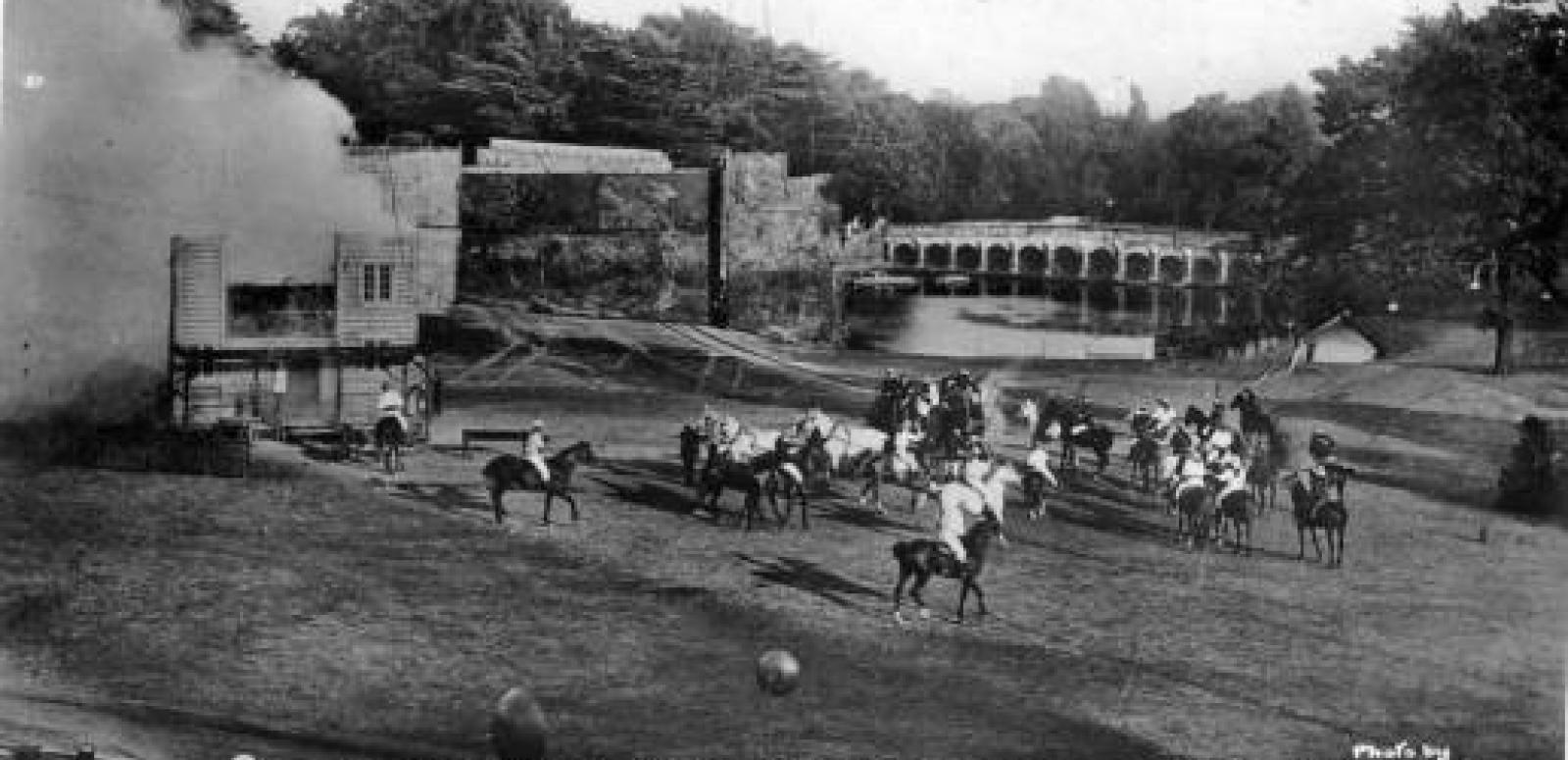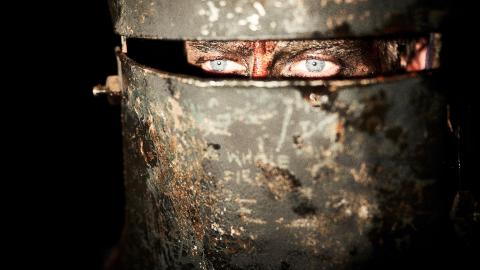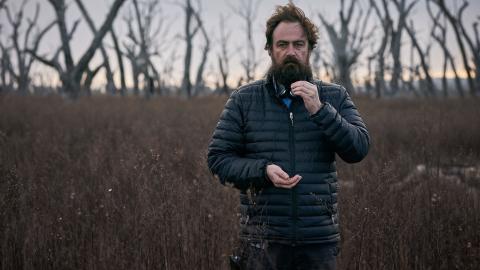

The other Kelly Gang film
The other Kelly Gang film
Within the depths of the NFSA’s collection lies a fragment of footage depicting a dramatisation of Ned Kelly and his gang’s thrilling capture during the siege at Glenrowan. It isn’t the famous The Story of the Kelly Gang (1906), but another film that has been the source of much speculation by film scholars and historians.
Referred to as ‘the Perth fragment’, a new piece of information discovered at the NFSA has led to the identification of the film, providing some resolution to the mystery that has surrounded it for decades.
The film is part of a recording from Wild Australia’s performance of ‘The Kelly Gang’ that took place at London’s Crystal Palace as part of the Festival of Empire in 1911.
Wild Australia was a buckjumping troupe managed by Victorian-born and Perth-raised Alfred Ernest Neave. The troupe was made up of a number of male and female horse riders who reflected part of Australia’s outback culture through a series of riding and shooting displays, ending in the Kelly Gang performance.
The film runs for approximately 10 minutes, appearing to portray only a segment of the overall performance. Specifically, it depicts a character named Ada Waldron riding to the rescue of patrons held hostage at the Glenrowan hotel; traitor Aaron Sherritt colluding with the constabulary to capture Kelly and claim the reward money; and the burning of the hotel as its climactic finale. This was all performed in what looks like a large park where theatrical sets of the hotel and foliage are clearly used as backgrounds to the action.
The Kelly Gang: The Battle of Glenrowan. NFSA title: 46371.
Ada Waldron was a key character in the unraveling of the mystery, as no one of the same name has been documented as knowing the real Ned Kelly or being connected to his gang. She was an entirely new character to this now mythic story, suggesting her uniqueness to this specific retelling. During the late 1890s and early 1900s, the Kelly story was popular among theatrical troupes, with versions of the events recounted in theatres all over Australia. Yet none of these versions were known to have a character named Ada Waldron. She remained shrouded in mystery until now where we see her named in the fragment’s inter-titles.
Perth collector Daryl Binning donated the 35mm nitrate film fragment to the NFSA in 2008. Understood to be the original, Binning was given the footage in 1967, when a copy was made at the National Film Archive (then located within the National Library of Australia). It made an appearance in an ABC documentary in the 1970s and was also shown on Channel Seven Perth in 1979 where Sylvia Neave, one of Alfred’s nieces and performer in Wild Australia, saw it. She also had a copy of the film on 16mm amongst other information and photographs of the performance that have also emerged.
This breakthrough has lead to the unearthing of information on the festival and Wild Australia’s ‘Kelly’ performance, but little is known about why this film was made. In the performance’s program, only a few names have been attributed to the cast of characters in the live production – F.W. Trott as Ned Kelly, Dan Seymour as Aaron Sherritt, Miss Berrill as Mrs. Sherritt, and Little Elna or Miss Neave as Ada Waldron. The latter name, Miss Neave, either refers to Gladys Neave, another of Alfred’s nieces, or Sylvia. While it can be speculated that some of these performers also appear in the filmed version, there is still a question around exactly who played whom. What is certain is that the program also unveils the details of the plot that directly match the film’s events… further evidence of the film’s origins.
Reference to the film has been found in a copy of The Bioscope, a UK film trade magazine published between 1908 and 1932. Distributed by the Co-operative Cinematograph Company, the film Wild Australia and another called The Kelly Gang were released in December of 1911, on the 14th and 27th respectively. According to the brief Bioscope reviews, Wild Australia was a recording of the troupe’s entire program performed at Crystal Palace, implying the inclusion of ‘The Kelly Gang’ scenario. Although not explicitly stated, The Kelly Gang listing points to a release of the performance as a separate film.
Wild Australia program, courtesy of the National Library of Australia.
Wild Australia program, page 1
Wild Australia program, page 2
Wild Australia program, page 3
Wild Australia program, page 4
As with the nature of archival research, this discovery has now raised a number of further questions. Were the films exhibited throughout the UK? If so, for how long? Did they get released in movie houses in Australia? What has happened to the rest of the film? With many more pieces of the puzzle still to be ascertained, at least part of the ‘Perth Fragment’ mystery has been indeed been solved.
The National Film and Sound Archive of Australia acknowledges Australia’s Aboriginal and Torres Strait Islander peoples as the Traditional Custodians of the land on which we work and live and gives respect to their Elders both past and present.


